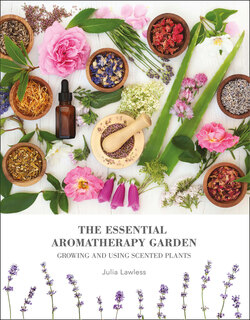Читать книгу The Essential Aromatherapy Garden - Julia Lawless - Страница 17
ОглавлениеTHE MEDICINAL OR PHYSIC GARDEN
It was in the medieval monastic gardens, however, that the first serious study of herbs took place in Europe and where herbs were grown for their medicinal, culinary and aromatic properties. Herbal treatment was the earliest form of medicine, and consequently the main reason for growing herbs was for their therapeutic benefits. Before the advent of modern drugs, plant medicine was the principal way of combating all kinds of disease, including infections, injury – and witchcraft. The notion of the physic garden began in Europe from the sixth century onwards, when herb gardens were planted next to the infirmary in monasteries. Formal physic gardens were established in Italy in the sixteenth century, first in Pisa in 1543, then in Padua and Florence. Germany, France, Sweden and the Netherlands followed suit, while the first physic garden in England was the Oxford Physic Garden, planted in 1621. After Edinburgh’s Physic Garden, the Chelsea Physic Garden was founded in 1673. This is the only physic garden in Britain that has not been turned into a botanic garden and retains its original name.
The physic garden was usually a large plot with raised beds, intersected by paths, where herbs such as lavender, rue, sage, mint and rosemary were each individually confined to a separate bed to make harvesting and identification easier. Both the physic garden and the cloister garth were based on this formal arrangement of paths and beds laid out in regular geometric shapes. The beds were often edged with pegged wooden boards to keep the soil in place, or fences of wattle, and also featured low hedging of compact aromatic shrubs such as box, lavender, rosemary or santolina. Many contemporary herb gardens are still based on these early physic garden designs, using either a grid basis or a cruciform structure – a simple cross with a central circular bed. (See Chapter 6: Planning an Aromatherapy Garden, for other traditional herb garden designs.)
From the Middle Ages onwards, significance was also given to the astrological connection between herbs and the parts of the body ruled by different planets. In his Liber de Vita, Marsilio Ficino (1433–1499) wrote that the sun ruled St John’s wort, rosemary and chamomile; Mercury ruled dill, fennel, honeysuckle and lily-of-the-valley, while Venus ruled mint, thyme and violet. The relationship between herbalism and astrology lasted until the eighteenth century when a more pragmatic, scientific approach became prevalent. The Doctrine of Signatures dates back even earlier, originally being developed in the esoteric mystical schools of Alexandria. This connected the shape of a herb with its curative properties and was a doctrine much promoted by Paracelsus in the early sixteenth century. For example, wild pansy, with its heart-shaped leaves, was said to cure disorders of the heart, whereas plants whose leaves are kidney-shaped were thought to be good for the renal system.
St John’s wort (Hypericum perforatum), used for hundreds of years as a natural mood booster.
Lukas Hejtman
Today, the main plants to include in a medicinal herb garden are those that can be used to make refreshing and digestive tisanes or herbal teas. These can be made at home from a wide range of plants, including lime flowers, chamomile, mint, sage, lemon balm, verbena and fennel.
